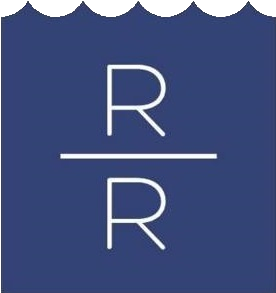Dive Lights: What Light & Motion light is the one for me?
Light and Motion have been a forerunner in the dive light field for ages. They brought compact yet powerful lights to the dive industry when most others were still creating bulky and heavy lighting systems. I will go as far as saying that they are the trend setter when it comes to dive lights.
With the amount of different lights available by them there is much confusion. What are the differences between them and how to tell what light is good for you? This article aims to answer some of these questions.
Dive Lights/Sola Dive
A great dive light does not always make a great underwater video/photography light. When looking for a great dive light you want a more of a focused beam to penetrate the water and see things in the distance, or to signal your buddy. Most sola dive lights have a narrow beam (12 degrees) to cut through murky water so you are able to signal your buddy from a distance, and also have a flood beam (60 degrees) to light up the Giant Pacific Octopus that is looking at you from a few meters away.
The brightness of the sola light is determined by the amount of lumen. More lumen equals brighter lights. The drawback is more lumen equals less burning time. Luckily all Sola dive lights can run at different intensities. In general people never complain about that their light is too bright, your buddy might though. So ideally buy the most lumen you can afford.
Video Lights/Sola Video
A video light needs to have a wide angle beam that does not have any hot spots. A hot spot is an area in your light beam that is brighter than the rest. Out of experience I can say that sola video lights don’t have a problem with that. Sola video lights range from a 90 degree angle to a 110 degree angle (the sola video pro le). Most of the time you would like to have two video lights mounted on arms so you can create the largest light bubble possible, and aluminate a larger area
The amount of lumen the light produces is going to determine the brightness of your light. But the same as with the dive light more lumen means shorter burn times. This is why the sola video lights have different intensities to dim your lights when not taking video, but are easily switched back to full power.
You can use a video light for photography. We did for many years, but for really stunning photos you still need a strobe or two.
The Gobe
Light and motions Gobe lights are yet another innovation in the dive industry. With their interchangeable light heads you can rig your gobe light for what ever mission you are on without breaking the bank. The GoBe comes in different light intensities (amount of lumen). Because of its small size it does not have the same endurance the bigger lights have.
Forinstance, the GOBE 1000 WIDE FC is a 1000 lumen light with a 60 degree light beam. Perfect as a general purpose dive light or a compact video light when traveling. But at its highest setting you only have 130 minutes of burn time, compared to a sola light at the same intensity you have 400 minutes.
The Gobe light body comes in three versions with different battery capacities. You have the 2.2Ah, the 2.6 Ah and the 3.0 Ah battery. It determines how much energy your battery can store. Again bigger is better. If you are not planning to buy different light heads it is not much of a concern to you. But if you are looking at purchasing different light heads like the IR or nightstar you might want to look at these specs before purchasing your gobe light.
Gobe light heads
Basically you have 3 different light heads for the Gobe. The wide angle 60 degrees, the spot 12 degrees and special purpose light heads. Most people will purchase a wide angle one as it is the most versatile. In the wide angle lights the amount of lumens indicates the brightness of your light
Note: Although lightheads are interchangeable, you can’t put a 1000 lumen light head on a body of a gobe designed for a 500 lumen head. It comes down to the battery. A 2.2Ah is not powerful enough to run a 1000 lumen light very long.
The NightSea head
If you have ever done a night dive on a coral reef using a conventional light you know it is quite magical. Still you are missing out. Lots of corals are actually luminescent under the right lighting. The NightSea head helps you bring out this luminescence. The first time I saw this spectical it blew me away. I always thought it was a gimmick but after trying it myself I say it is worth while. Remember you need a yellow filter for your mask, and or camera to see the effect.
The Focus Head
This is perfect for photographers as the red light does not hamper your flash, but gives your camera enough light to focus.
The Infrared Head
This is for people who want to take video or pictures of underwater aquatic life without disturbing them. You lose all colours but you can see their natural behavior, as the creatures won’t pickup this light spectrum.





